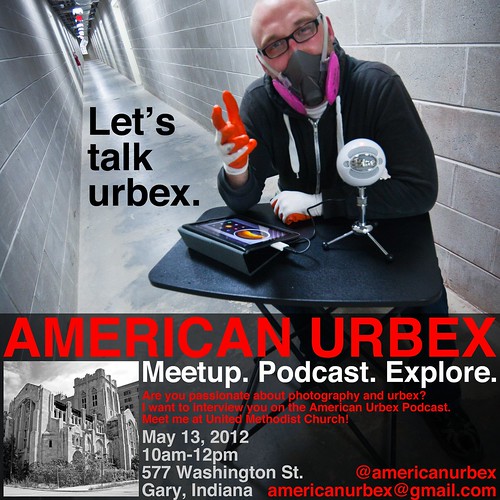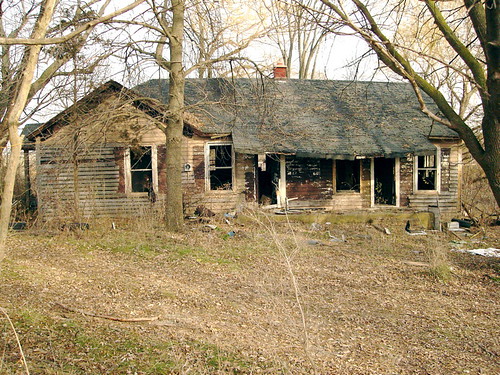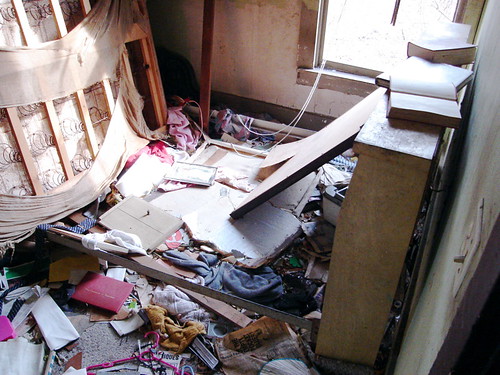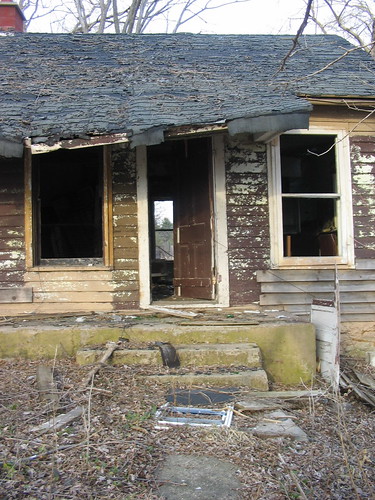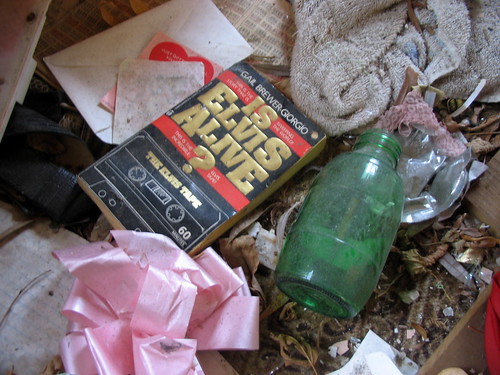American Urbex put out the call for interviews and Brandon Davis answered. The Cleveland area amateur photographer has been urbexing for about three years now. Like other urbex photographers, he has become enraptured by the effects of decay.

AU: What is it about urbex that attracts you?
BD: Abandoned buildings, to me, are a part of history that is being lost little by little each day. Each structure I step into is like a step back into time. Its interesting to stand and imagine where people sat or worked on that very floor. I enjoy documenting the way human and natural elements have caused each building to decay in such interesting ways. Urbex locations are all places that local cities have forgotten about, just left to rot into the ground. In some cases, this can be a very sad thing. Old buildings have beautiful and amazing architectural qualities. Its surprising that building owners and city officials could just leave them behind.
AU: What was the first urbex location you visited?
BD: The first urbex site I ever explored was the old U.S. Coast Guard Station in Cleveland, OH. This structure is right on Lake Erie and has a very unique design. I also knew some of the history about the building. It had been abandoned since the late 1980’s after the coast guard moved its operations to the other side of the city. The building was also converted into a restaurant for a short while after that. I knew that the inside would probably be just as interesting as the outside, so I was determined to go check it out. The exterior was full of NO TRESPASSING signs and boards, but me and my friend found a way in through an open window.

Once we were inside the building, I got my first glimpse at the peeling paint and rotting floors that are typical for abandoned structures. It amazed me that such decay could happen in a building and it made me want capture it just as I saw it, with an interesting and artistic view. I have returned to the Coast Guard Station many times since my first visit. My photos of this location have gotten better and better each time.
AU: What is one of the most interesting items you have found urbexing?
BD: On one of those return visits [to the U.S. Coast Guard Station] I found an old menu for The Island, which is the name of the restaurant that occupied the building after the Coast Guard left. The paper menu was discolored and crumbling, much like the interior of the building. I liked finding this item because it showed firsthand the life and history this building had. It also gave the location a special character and made me appreciate it that much more.

AU: What sort of gear do you bring with you when you go urbexing?
BD: When I go out to explore places, I bring my Sony A-100 and Sony A-300 along with a 2.8 aperture, 28 mm. Minolta lens, and a Sony 75-300 telephoto zoom lens. I enjoy these cameras because they perform great in low-light situations, which occur in most abandoned locations. I am also very familiar with the controls on Sony cameras, so I can have excellent control over what I want to capture.
Along with the camera gear, I also bring a flashlight or two, and a good pair of gloves. Typically I go out urbex shooting with a group of friends. I like to keep the crew number to three or four, which I’ve found is a great number of people to join me on a shoot. A larger group has the risk of causing a scene, or making too much noise.
AU: What is your worst urbex experience?
BD: My worst urbex experiences come when I try hard to gain access to a building but find that there is no way in. In one particular case, I was trying to explore an office building in Cleveland with one of my friends. This office building was right next to an active news station, so we had to be very careful. I had been to this location before and this was a return visit. After successfully getting inside the fence, we checked all sides of the building and couldn’t find a single way in. The door I entered the first time was now locked. We spend about 45 minutes trying to get in and ended up wasting all that time for nothing. Situations like these occur every once in a while for me, and they are always extremely frustrating.
Thanks to Brandon for answering some questions for American Urbex and being the interview guinea pig prototype. Getting a wide variety of urbex perspectives is essential for casting urbex in a positive light. If you would like to share your experiences, please answer the call.
